Abstract
In most talk therapies for outpatient adults, the therapist has no contro over the client's daily life or contingencies outside the treatment session. The fundamental theoretical issue facing the behavior analyst is, “How can the talking that goes on during the session help the client with problems that occur outside the session in the client's daily life?” An historical analysis and the application of verbal behavior principles are used to answer the question and form the basis of clinical behavior analysis (CBA). The implications of CBA range from providing a theoretical base for psychotherapy to suggesting new forms of treatment.
Keywords: clinical behavior analysis, psychotherapy, verbal behavior, behavior therapy
Full text
PDF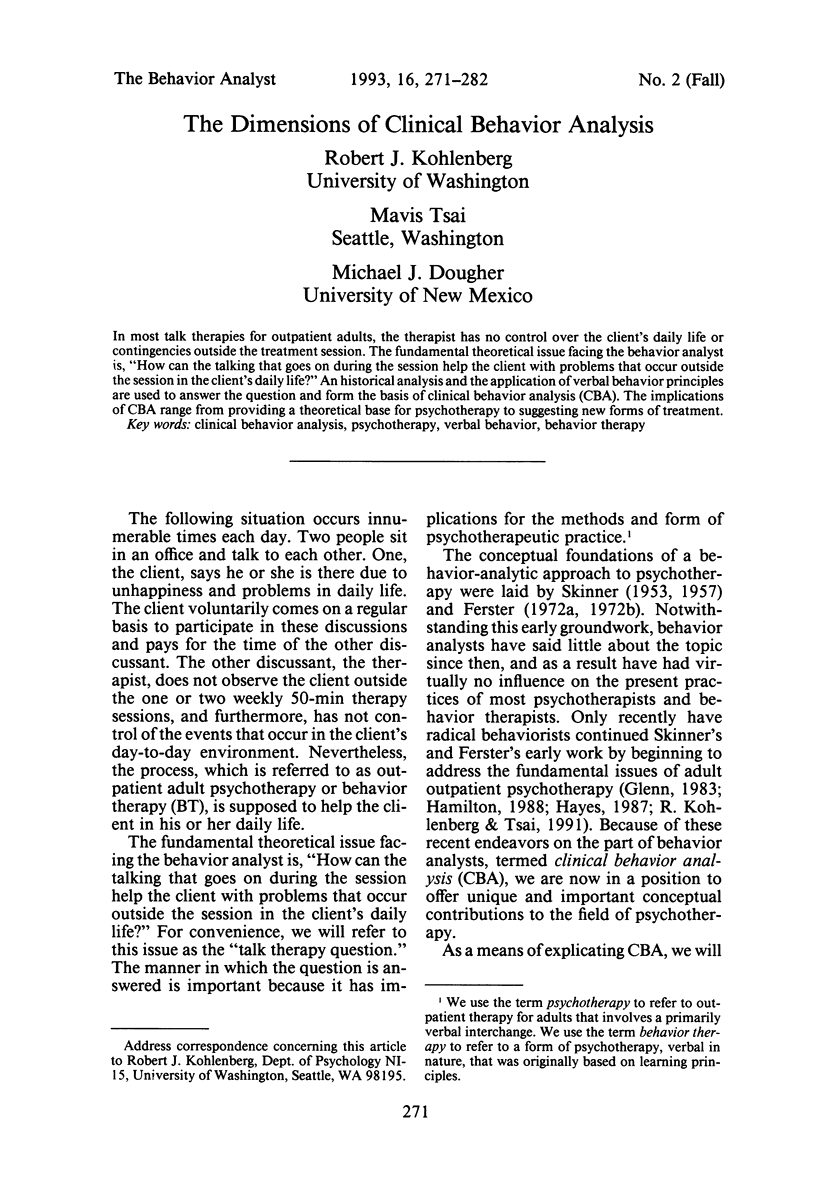
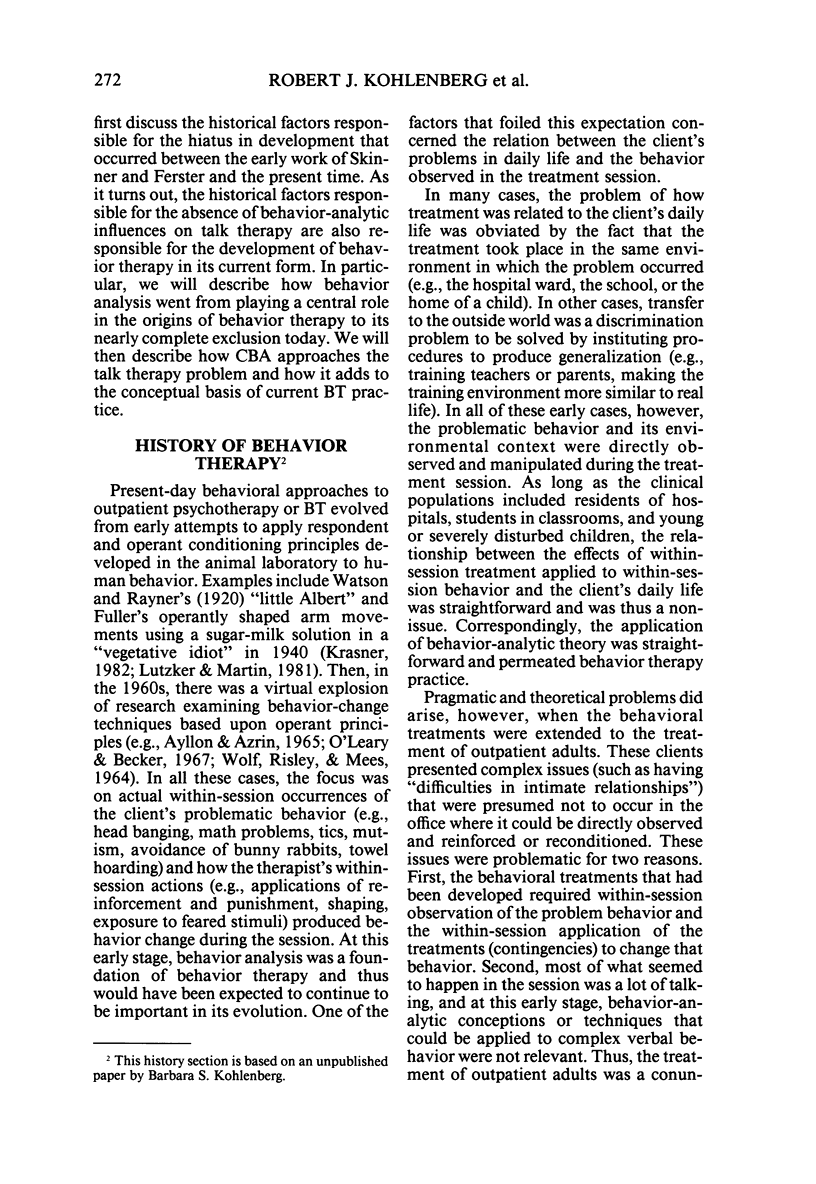

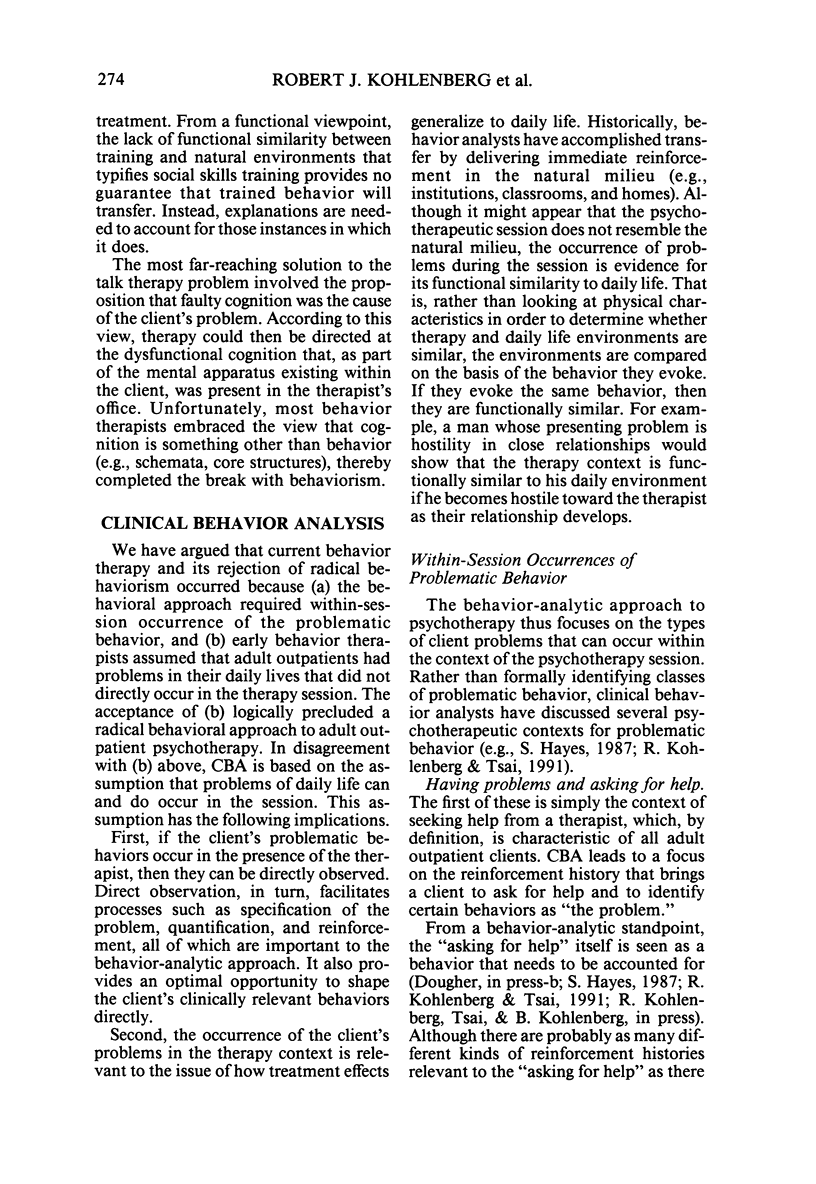
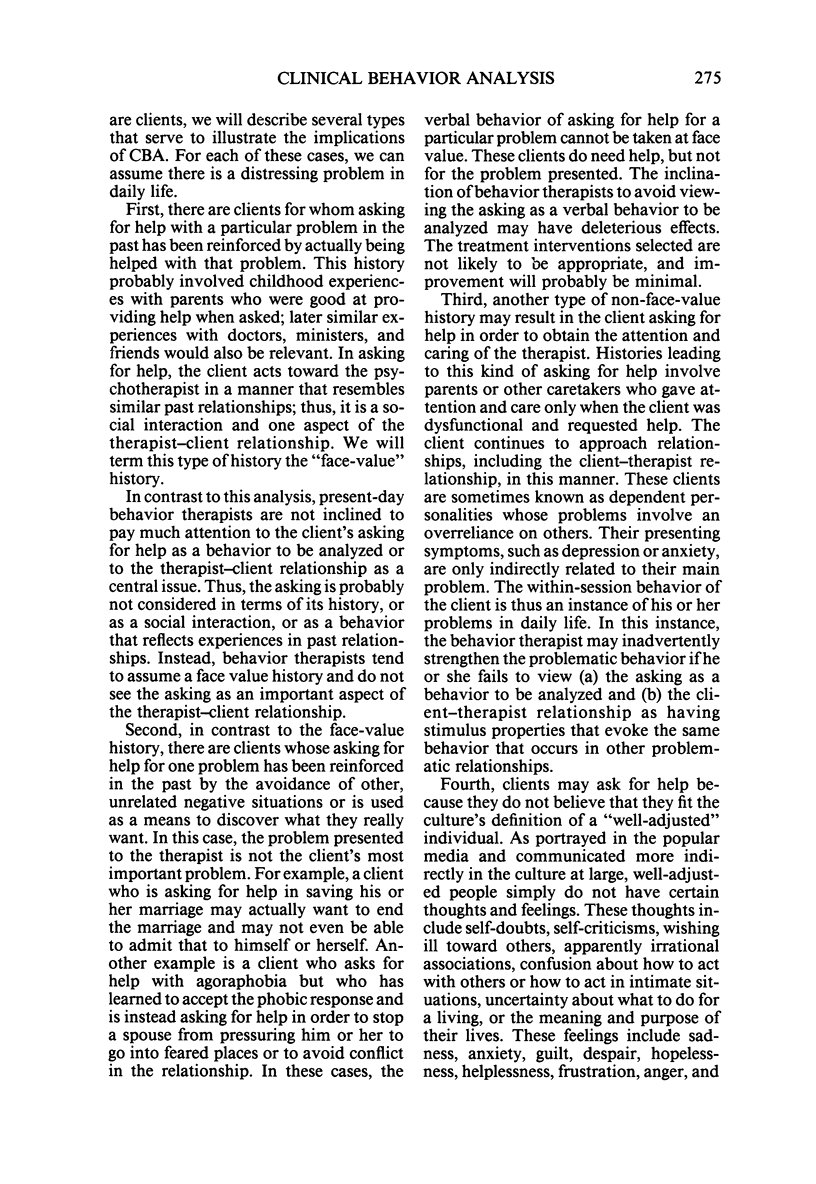
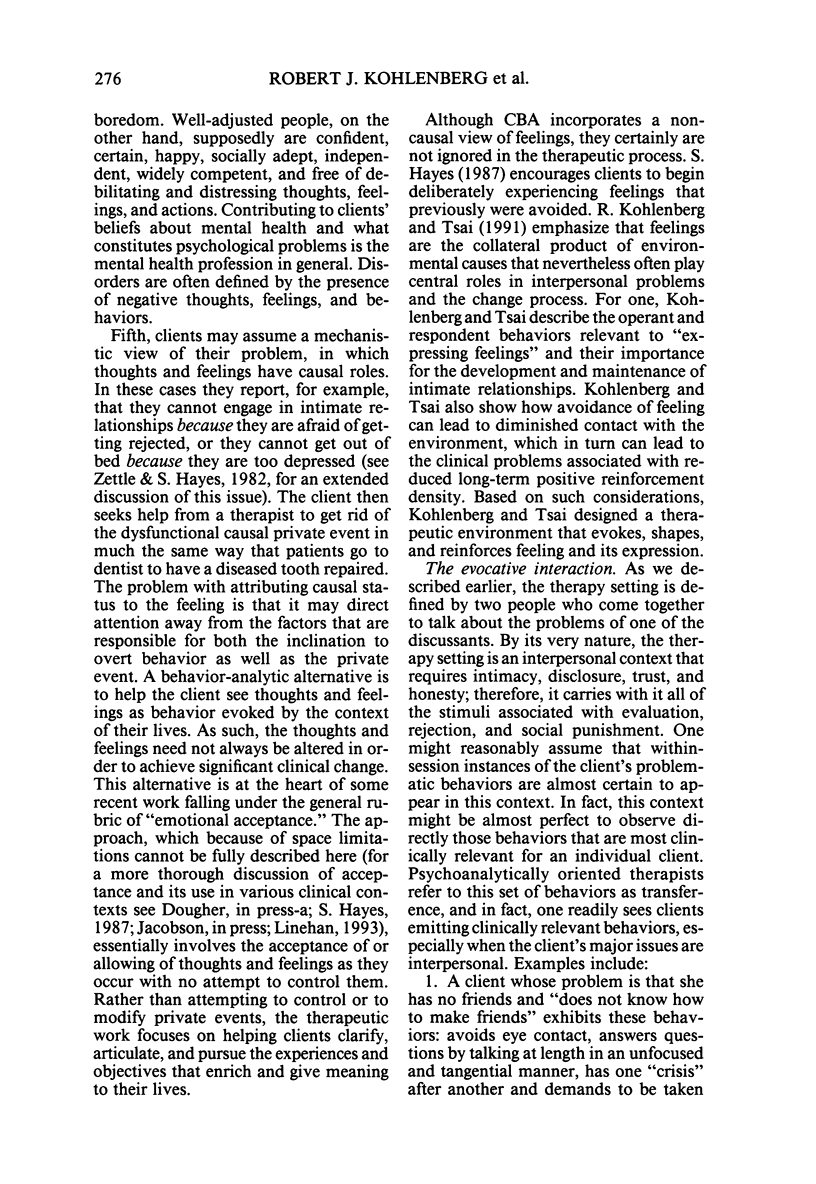
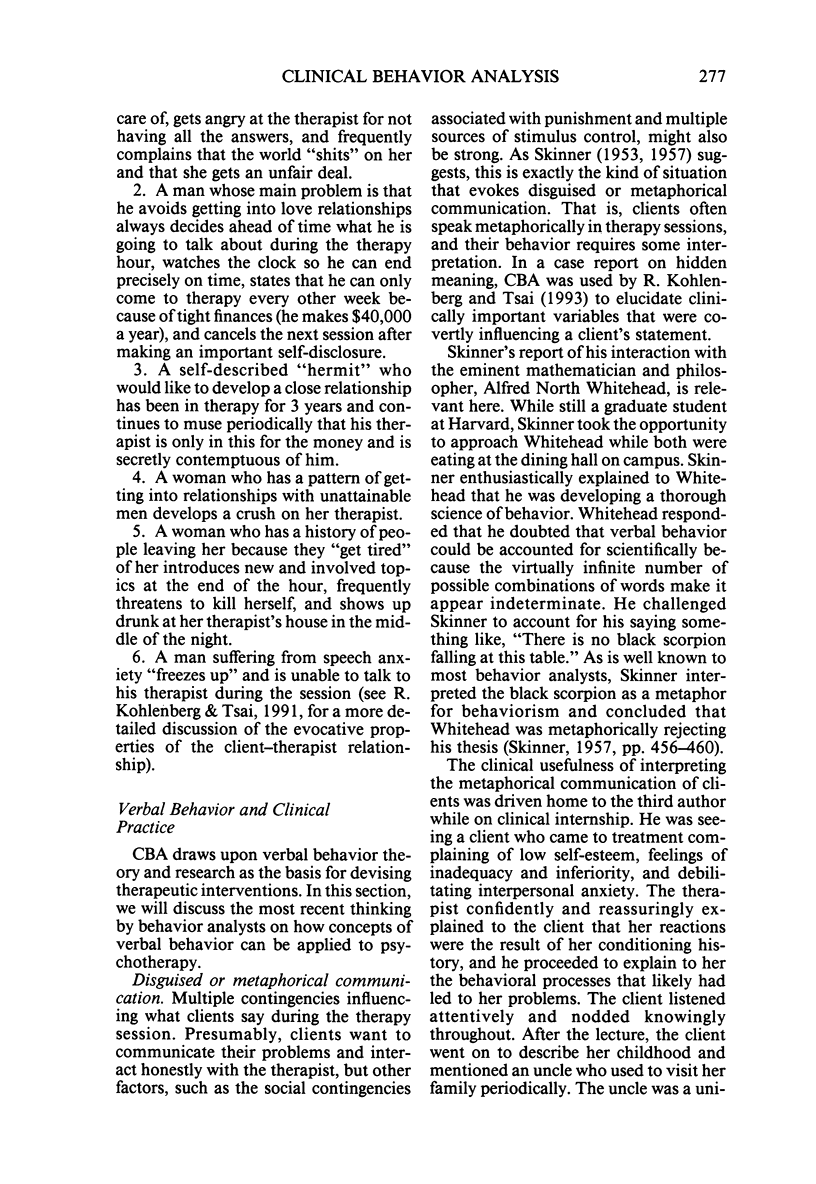
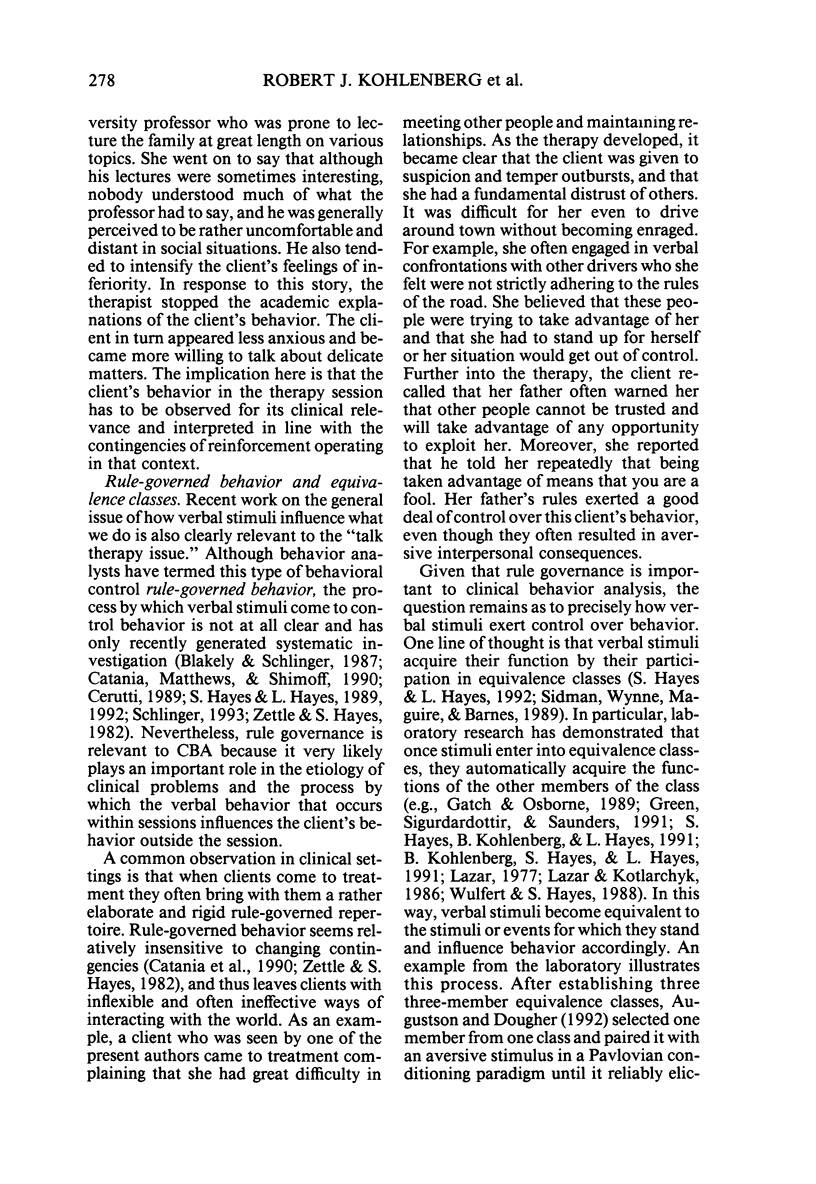
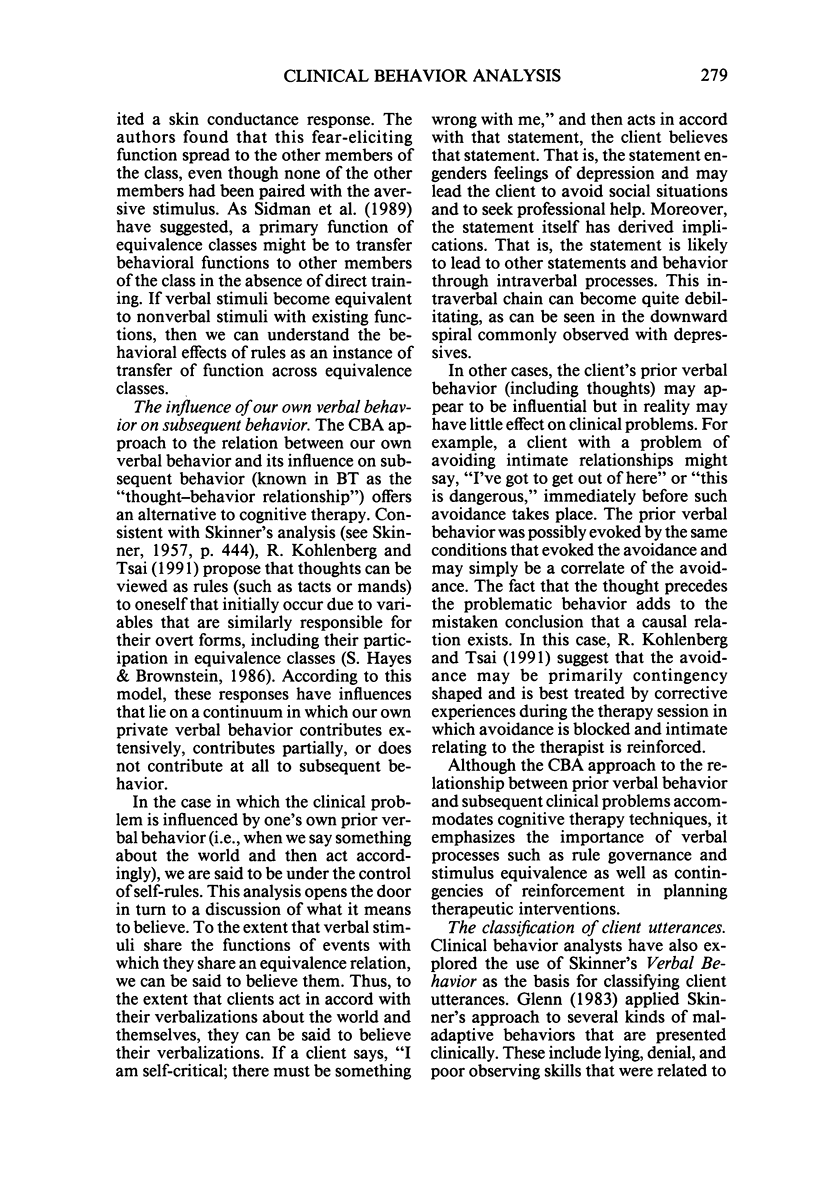
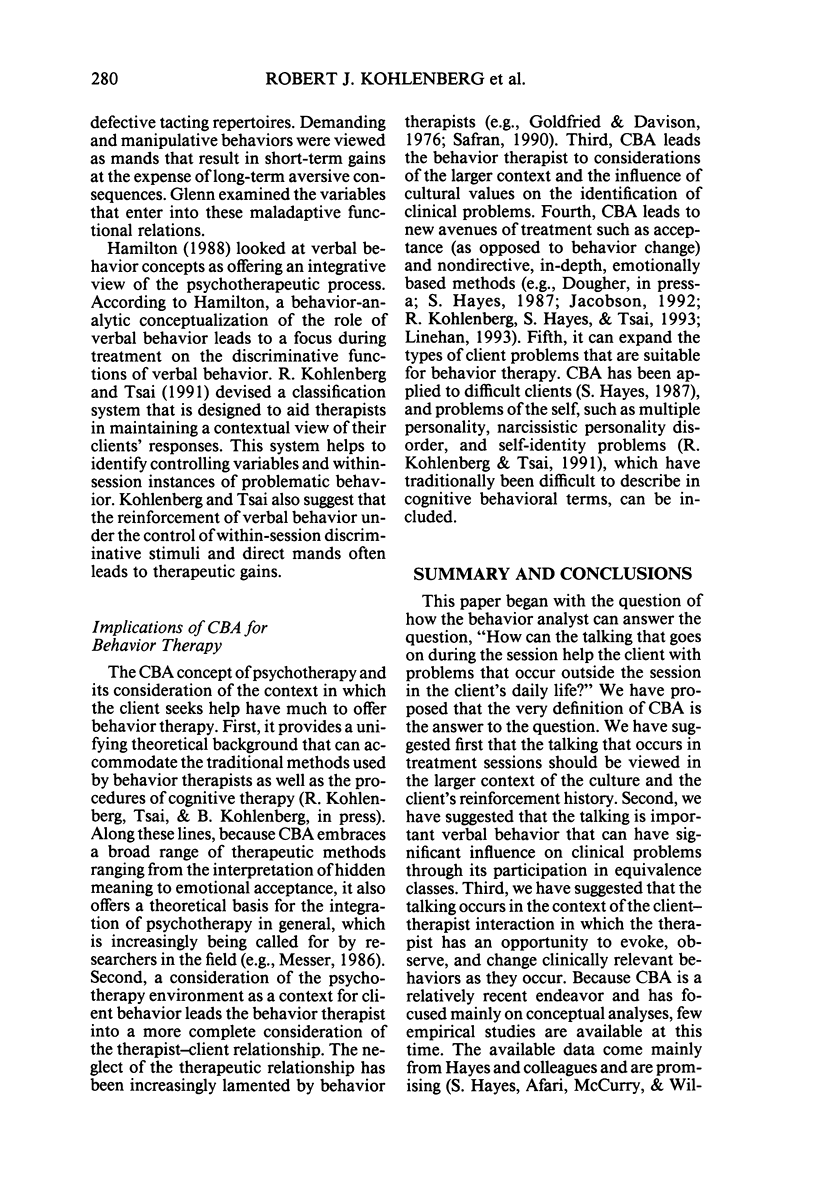
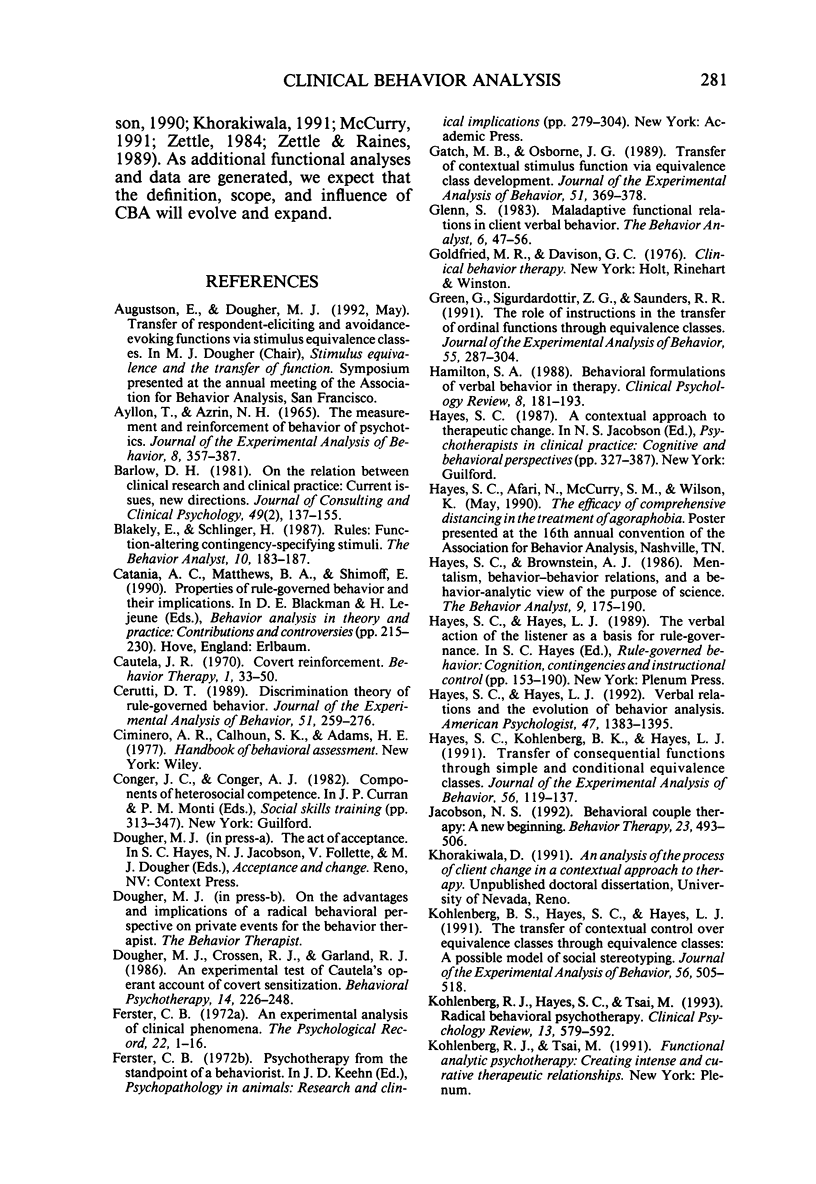
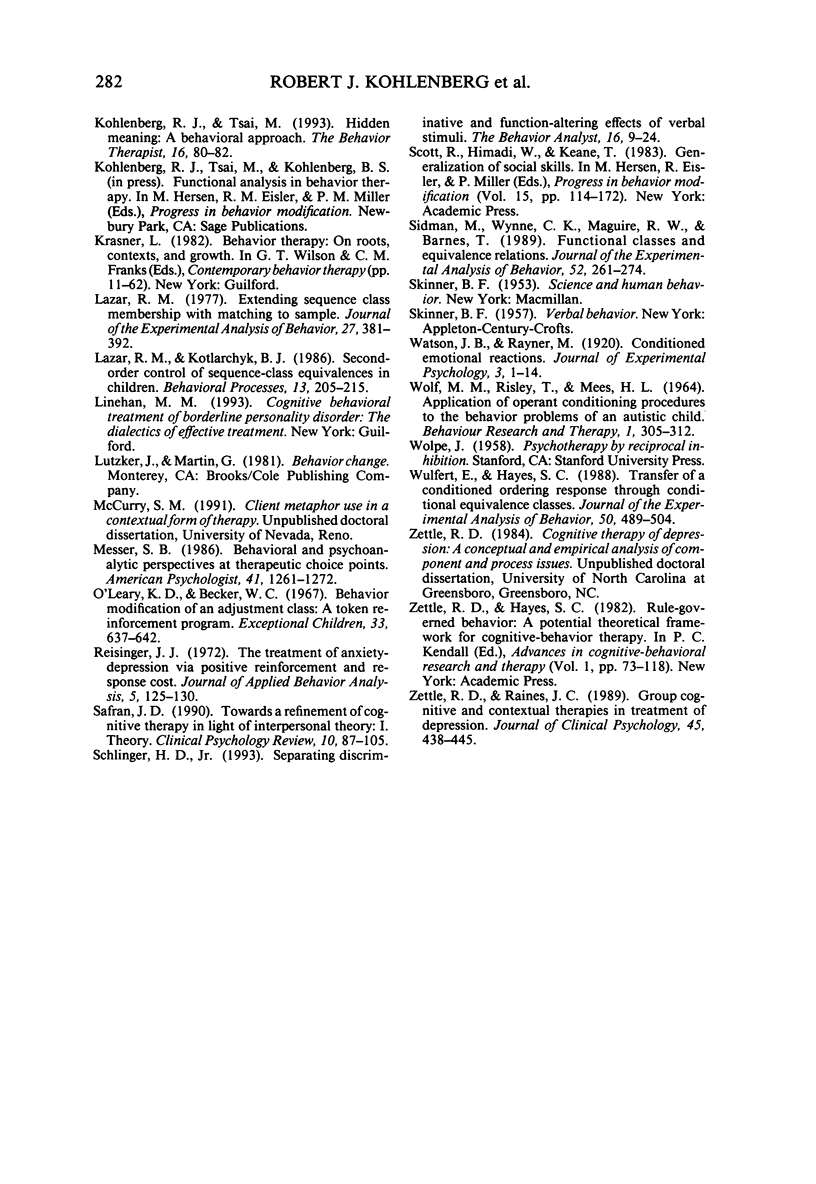
Selected References
These references are in PubMed. This may not be the complete list of references from this article.
- Ayllon T., Azrin N. H. The measurement and reinforcement of behavior of psychotics. J Exp Anal Behav. 1965 Nov;8(6):357–383. doi: 10.1901/jeab.1965.8-357. [DOI] [PMC free article] [PubMed] [Google Scholar]
- Blakely E., Schlinger H. Rules: Function-altering contingency-specifying stimuli. Behav Anal. 1987 Fall;10(2):183–187. doi: 10.1007/BF03392428. [DOI] [PMC free article] [PubMed] [Google Scholar]
- Cerutti D. T. Discrimination theory of rule-governed behavior. J Exp Anal Behav. 1989 Mar;51(2):259–276. doi: 10.1901/jeab.1989.51-259. [DOI] [PMC free article] [PubMed] [Google Scholar]
- Dunleavy R. A. Neuropsychological correlates of asthma: effect of hypoxia or drugs? J Consult Clin Psychol. 1981 Feb;49(1):137–137. [PubMed] [Google Scholar]
- Gatch M. B., Osborne J. G. Transfer of contextual stimulus function via equivalence class development. J Exp Anal Behav. 1989 May;51(3):369–378. doi: 10.1901/jeab.1989.51-369. [DOI] [PMC free article] [PubMed] [Google Scholar]
- Glenn S. S. Maladaptive functional relations in client verbal behavior. Behav Anal. 1983 Spring;6(1):47–56. doi: 10.1007/BF03391873. [DOI] [PMC free article] [PubMed] [Google Scholar]
- Green G., Sigurdardottir Z. G., Saunders R. R. The role of instructions in the transfer of ordinal functions through equivalence classes. J Exp Anal Behav. 1991 May;55(3):287–304. doi: 10.1901/jeab.1991.55-287. [DOI] [PMC free article] [PubMed] [Google Scholar]
- Hayes S. C., Brownstein A. J. Mentalism, behavior-behavior relations, and a behavior-analytic view of the purposes of science. Behav Anal. 1986 Fall;9(2):175–190. doi: 10.1007/BF03391944. [DOI] [PMC free article] [PubMed] [Google Scholar]
- Hayes S. C., Kohlenberg B. S., Hayes L. J. The transfer of specific and general consequential functions through simple and conditional equivalence relations. J Exp Anal Behav. 1991 Jul;56(1):119–137. doi: 10.1901/jeab.1991.56-119. [DOI] [PMC free article] [PubMed] [Google Scholar]
- Kohlenberg B. S., Hayes S. C., Hayes L. J. The transfer of contextual control over equivalence classes through equivalence classes: a possible model of social stereotyping. J Exp Anal Behav. 1991 Nov;56(3):505–518. doi: 10.1901/jeab.1991.56-505. [DOI] [PMC free article] [PubMed] [Google Scholar]
- Lazar R. Extending sequence-class membership with matching to sample. J Exp Anal Behav. 1977 Mar;27(2):381–392. doi: 10.1901/jeab.1977.27-381. [DOI] [PMC free article] [PubMed] [Google Scholar]
- Messer S. B. Behavioral and psychoanalytic perspectives at therapeutic choice points. Am Psychol. 1986 Nov;41(11):1261–1272. doi: 10.1037//0003-066x.41.11.1261. [DOI] [PubMed] [Google Scholar]
- O'Leary K. D., Becker W. C. Behavior modification of an adjustment class: a token reinforcement program. Except Child. 1967 May;33(9):637–642. [PubMed] [Google Scholar]
- Reisinger J. J. The treatment of "anxiety-depression" via positive reinforcement and response cost. J Appl Behav Anal. 1972 Summer;5(2):125–130. doi: 10.1901/jaba.1972.5-125. [DOI] [PMC free article] [PubMed] [Google Scholar]
- Schlinger H. D., Jr Separating discriminative and function-altering effects of verbal stimuli. Behav Anal. 1993 Spring;16(1):9–23. doi: 10.1007/BF03392605. [DOI] [PMC free article] [PubMed] [Google Scholar]
- Scott R. R., Himadi W., Keane T. M. A review of generalization in social skills training: suggestions for future research. Prog Behav Modif. 1983;15:113–172. doi: 10.1016/b978-0-12-535615-2.50008-5. [DOI] [PubMed] [Google Scholar]
- Sidman M., Wynne C. K., Maguire R. W., Barnes T. Functional classes and equivalence relations. J Exp Anal Behav. 1989 Nov;52(3):261–274. doi: 10.1901/jeab.1989.52-261. [DOI] [PMC free article] [PubMed] [Google Scholar]
- Zettle R. D., Rains J. C. Group cognitive and contextual therapies in treatment of depression. J Clin Psychol. 1989 May;45(3):436–445. doi: 10.1002/1097-4679(198905)45:3<436::aid-jclp2270450314>3.0.co;2-l. [DOI] [PubMed] [Google Scholar]


